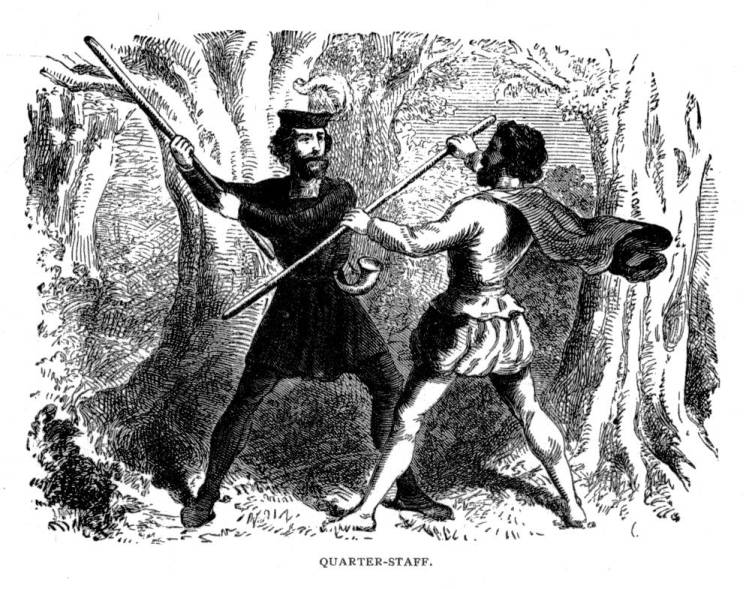One of the explanations as to why a quarterstaff is called a quarterstaff is that it is gripped “at the quarters”. One hand is placed a quarter of the way from the bottom and the other is placed at the mid-point of the staff, leaving about half the weapon’s length as the primary striking part. In a previous post I discussed the “perfect length” of swords and offered the theory that the optimum length of a blade would be that sufficient to defend the remotest part of the body, the ankle/foot area. For me, being 5’ 11” this required a blade of about 28-30”.
The same logic can be applied to a fighting staff. The “top” part needs to be about 28-30” for me. For leverage and comfort my hands want to be about shoulder width apart so the middle part of the staff wants to be at least 18”. According to Vitruvian proportions shoulder width should be a quarter of my height. I also want a section of staff projecting below my lower hand for both defensive and offensive purposes but don’t want this so long that it gets in the way when using the primary striking part. About 12” sounds about right. 30 + 18 +12 = 60”, or thereabouts. This is a bit shorter than I am, but that is not a bad thing since it makes the staff easier to get through doorways and more useful if fighting indoors or other restrictive terrain.
If we are considering fighting staffs the Japanese Bo and Jo will come up. The Bo is usually the Roshakubo (Six shaku long staff), which is about 1.82 m or 71.6 inches long. This is probably taller than many historical Japanese Bo users. Most staffs sold in martial arts stores these days are a round 6 foot length or longer. The Jo is usually defined as being 4 foot long but more accurately is 4 shaku, 2 sun, 1 bu = 127.56 cm, 4 foot 4¼ inches or 50¼ inches. An alternate convention is that it should reach up to just under the user’s armpit height, which would be about five-sixths of total height. Readers who know their weapon history will know that the Jo was allegedly invented by a Bo expert Muso Gonnosuke who wanted a faster and handier weapon after being bested by the legendary swordsman Miyamoto Musashi. Although not as well known, the classical Japanese arsenal also includes the Goshakubo or 5 shaku staff of 1.52 m or 59.7 inches. If we look further afield we will discover that many martial traditions, from Portugal to India consider around 5 foot to be the preferred length for a fighting staff. Sometimes these are given as measurement related to the user’s stature, suggesting the staff should be as high as the chin, nose or forehead, for example. Many Chinese martial arts consider the correct length for a staff to be up to the user’s eyebrow. An interesting snippet of information is that your eye-height is 93% of your total height so an eyebrow height staff for me would be about 5’ 7”.
 A good length for a practical fighting staff seems to be within a range from “armpit to brow” height, which for me is from 59” to 67”.
A good length for a practical fighting staff seems to be within a range from “armpit to brow” height, which for me is from 59” to 67”.
Interestingly, 5 foot is the recommended length for a boy scout hiking staff, which reminds us that a fighting staff has many other applications as well as defence.
For techniques on using a fighting staff, see my book Attack, Avoid, Survive: Essential Principles of Self Defence. There is also a brief discussion about hiking staffs in my other book, Survival Weapons: Optimizing Your Arsenal.
The Books




